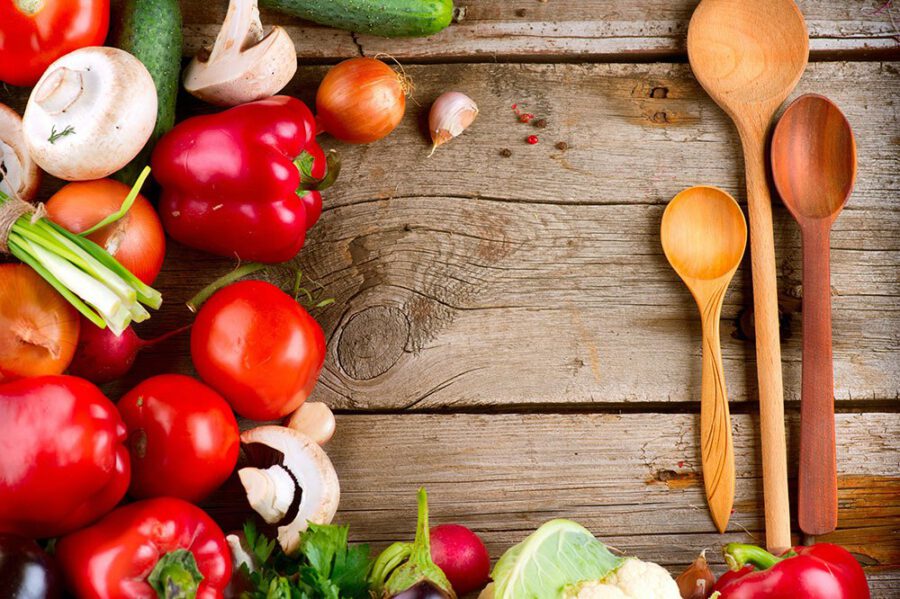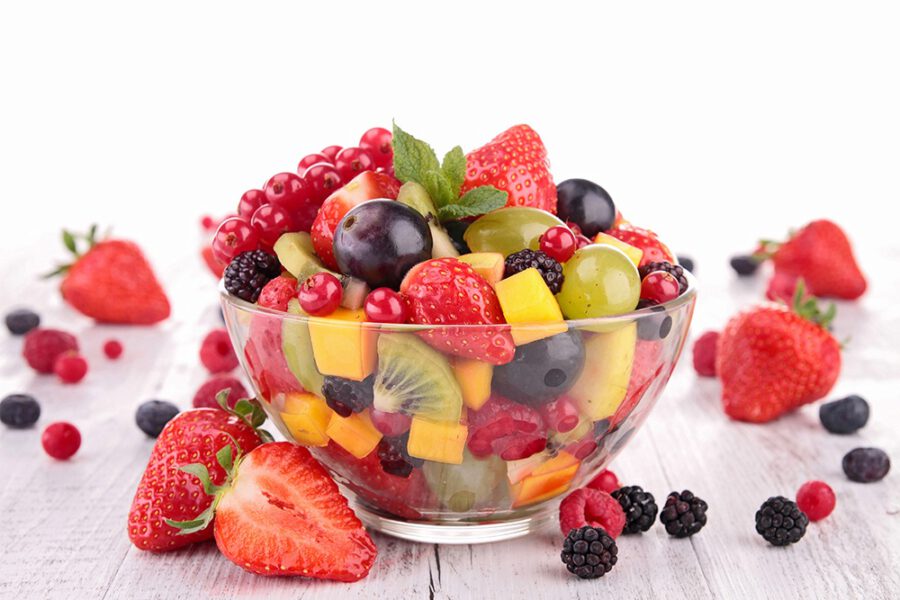Fresh V.S. Frozen Fruits And Vegetables, Which is Best?
There are tons of recipes using fresh fruits and vegetables, but the fear of fresh foods going bad and the cost of constantly buying more fresh produce can be daunting.
Gymaholic busts the myth about freezing killing nutrition, and shows you some recipes to get creative with any frozen fruits and vegetables you might have hidden in your freezer.
Some people are convinced that because produce has been frozen the nutritional value can be cut down. If you are one of these people, rest assured that this myth has been totally busted. There is no significant loss in nutritional value from freezing!
Of course, with improper storing or packaging you can freezer burn anything, but if you just keep things sealed well, there’s very little value lost over several months. Stock up your freezers, because they aren’t just used for meat!
If you don’t lose nutritional value from freezing, are there any ways you can lose nutritional value? It’s actually during the cooking process. Heat can denature proteins and destroy vitamins and minerals in foods, so overcooking vegetables is where you can lose some nutrition.
The most nutritious to least nutritious ways to cook vegetables are:
- Raw
- Steamed
- Boiled
- Baked
- Fried
Even so, all of these cooking methods shouldn’t take away enough vitamins and antioxidants for you to worry.
What takes away the ‘healthiness’ from the dish you’re making is more likely the oil, butter and salt used to stop it from sticking, add flavor and keep moisture in your cooking. Baking and frying tempt you to add more fats, whereas water-based cooking reduces that need.
More is better! ...When it comes to fruits and vegetables, that is. A ton of people specifically don’t get enough vegetables, and some people don’t eat a ton of fruit either! They contain powerful antioxidants, vitamins and minerals galore, and healthy fibre.
Frozen packages of fruit and vegetables aren’t always cheaper than fresh produce, but they do have the value of convenience. They also often contain larger amounts, and higher quality produce than the fresh produce you may have to pick through and choose yourself.
You also save time by buying canned or frozen, because they are often already cut up and ready to use. There is no clock ticking down the time you have to use them, which saves waste, and thus can also save you even more money.
Breakfast ‘Icecream’
Yep, you read that right. Icecream for breakfast? It’s like frozen yogurt in the morning without all the added sugar, and you still get the fun of adding your favourite crunchy toppings! For this recipe you will need:
- 1-2 Cups of Frozen Fruit
- ½-1 Cup of Milk (Dairy or Non-Dairy)
- ½ Cup Greek Yogurt (0% Vanilla Recommended)
Put all three into a small blender and blend until smooth (You can also double the amounts in a large blender and freeze half!). If the blend is too liquidy, add more frozen fruit and yogurt to make it as thick as you want. If your mix gets too thick and blocks some of the frozen pieces from getting blended, add more milk.
You can also add a scoop of your favourite protein powder, flax or chia seeds, and even a chunk of frozen spinach directly into the main icecream blend! Some topping ideas for your icecream are:
- Your Favourite Granola
- Sunflower, Pumpkin, Flax and Chia... Seeds
- Pecans, Almonds, Cashew... Nuts
- Shredded or Flakes of Coconut
- Fresh Fruit or Warmed Frozen Fruit
Pasta salad is a classic, and there are so many variations it’s hard to go wrong. There are tons of different types of pasta to choose from, but here’s my general guidelines, and my recipe for the dressing:
- 2-3 Cups Pasta (Reg, Whole Wheat or a Mix of Both)
- 1-2 Cup Fresh Vegetables (Peppers, Cucumber, Onion, Tomato...)
- 1 Cup Frozen or Canned Vegetables (Edamame, Corn, Green Peas, Chickpeas, Beans…)
- 1 Cup Cheese Cubes (Optional) ¼-½ Cup Dressing*
Dressing
Sometimes I like to have store bought dressing, but I extend it and cut down on the sugar added to them by only using a small amount and combining it with my homemade dressing. Optional Replace 1-2 Tbsp Oil with Italian Dressing
- 2-4 Tbsp Extra Virgin Olive Oil
- 1 Tbsp Apple Cider Vinegar
- 1 Tbsp Paprika
- 1 Tbsp Oregano
- 1 Tbsp Onion Salt
- 1 Tbsp Garlic Powder
- Salt & Pepper
Cook the pasta, and then mix the frozen vegetables in with it to thaw them and cool the pasta down. Chop all fresh vegetables into small pieces, the cheese into small cubes and drain and rinse any canned beans/peas.
Once the pasta is cool enough that it won’t melt the cheese, you can mix everything together, add half the dressing and stick it in the fridge. Pasta salad is much better when it’s cold, and the salad will soak up some of the dressing in the fridge, so add a bit more dressing after a couple hours in the fridge, mix it up and you’re good to go!
Here’s workout plan for women who want to lose weight:
And for men:
Think it’s hard to make healthier fried rice? Think again! Fried rice is super easy, and very versatile with what vegetables you can add to it. The one thing to remember is that you’ll get the best tasting fried rice if you cook the rice the day before, and just heat it up in the pan.
You can also add some extra protein to your dish by mixing in cooked chicken, steak or salmon with the rice, or just serve cooked on top of the rice. Optional Add Chicken Breast, Salmon Fillet, or Small Steak.
- 2-3 Tbsp Extra Virgin Olive Oil
- 1-2 Cups Fresh Vegetables (Carrots, Onions, - Broccoli, Peppers…)
- 1 Cup Frozen Vegetables (Edamame, Peas, - Carrots, Mixed Veg…)
- 2-3 Cups Cooked Rice (White, Brown, Mixed…)
- 2 Tbsp Soya Sauce
- 1-2 Tbsp Sesame Oil
- 1 Tbsp Garlic
- 1 Egg
Heat a large skillet or wok on medium heat and add a bit of oil to the pan, leaving some on the side. Put all the vegetables in the pan and cook for a few minutes, tossing them in the oil.
Add in a tbsp of soya sauce and sesame oil, then toss and cook for another 5 minutes or until some of the vegetables get lightly browned. Add the rice, garlic, a little more extra virgin olive oil, soya sauce and sesame oil and toss together. Keep heating for another few minutes to warm and combine.
Make an open space in the middle of the pan, scramble the egg in a dish and then put the egg in the open space. Let it cook for several seconds and then mix everything together and let it finish cooking in the rice and vegetables. Cook for another couple minutes until you’re satisfied everything is hot and cooked and serve!
Find any ways you can add more fruits and vegetables to your diet, the more, the better! Whether it be fresh, canned or frozen, don’t be afraid to add more vegetables to your meals. Your body will thank you.
With all that being said, here are some highly customizable recipes for breakfast, lunch and dinner, so you can get some use out of that frozen produce. The recipe ingredients and directions are down below!

